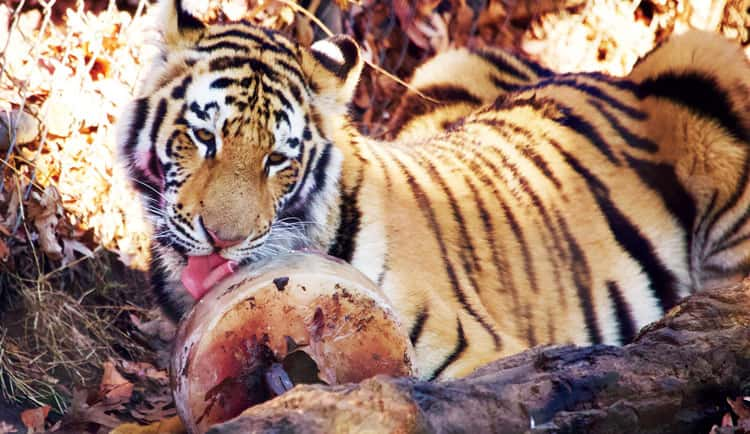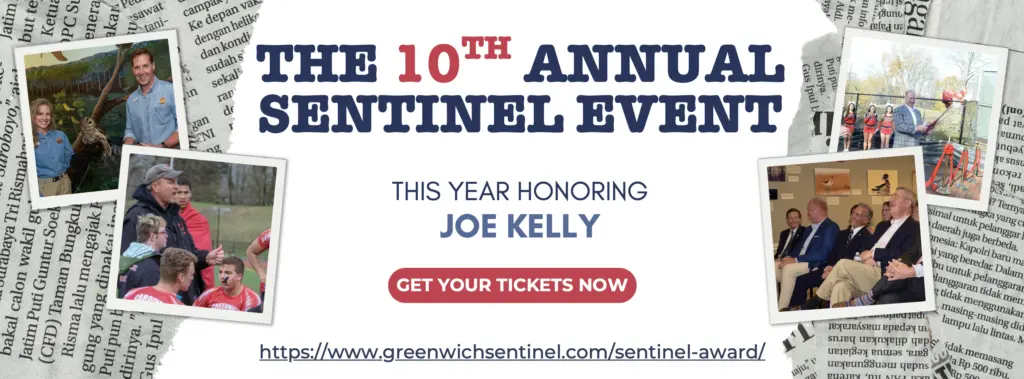

By Paul Silverfarb
Sentinel Editor
The Beardsley Zoo has made a habit out of coming to the Greenwich community, and showcasing their animals and educating children and adults about the species we share this planet with.
And now the zoo is looking for the Greenwich community, as well as other communities from around the region, to help them better the lives of the endangered animals that call Bridgeport home and make the Beardsley Zoo an even bigger destination for families to get an up close and personal view of these animals.
“The more we can be a part of those communities and those activities that go on in the communities, the more face time we put in with them and a lot of time that generates someone saying that they had a birthday party at the zoo and haven’t been there in a while. Then they stop by the zoo,” said Jessica Summers, Director of Development and Marketing at the Beardsley Zoo. “We try to get everywhere in the state so we can be top of the mind.”
The Town of Greenwich and the Beardsley Zoo have a special connection, as animal experts have traveled to the area and spread the word about what the zoo has to offer. Whether it’s children touching turtle shells at the annual Go Wild event at the Greenwich Polo Club or visiting one of the many Greenwich Public Schools to teach children about endangered species, the zoo has touched the lives of countless people and for several generations.

In fact, the Beardsley Zoo had several events that took place at the Bruce Museum in Greenwich. A Conservation Conversation: A Live, Interactive Discussion took place back in late June. In September, the Fred Elser First Sunday Science Series at the Seaside Center presented Saving Animals from Extinction and the zoo’s education department and outreach was featured front row center.
“Our ability to get out to the community, from the school groups, working with the teachers and finding curriculums is key for us,” said Summers, who takes great pride in the Beardsley Zoo having a fully-staffed education department. “We want to spent time with them as well as having them come here. While towns like Greenwich seem like they are far away, they are not.”
And when people from all over come out and visit the Beardsley Zoo, one of the main attractions that garners stares and fascinates people both young and old are the Amur tigers. In a few years, with the help from the surrounding community, that tiger habitat will look quite different.
The tiger exhibit is going to be expanded. As an Association of Zoos and Aquarium accredited facility, the Beardsley Zoo is trying to build on the current holding, add an existing holding and add more space for when they get more cubs. Right now the zoo has three cubs and previously housed four. Petya, a tiger that came to the zoo back in 2015 from the Indianapolis Zoo, went to a permanent AZA-accredited home.
“We are running out of space,” Summers said. “Tigers don’t stay together after they mate. With the expanded space, we could have the mom, dad, however many cubs and utilize that space until they move to another AZA-accredited zoo. It’s been a goal for us for what seems like forever.”
And that’s where it’s great to have friends from all over. After the tiger cubs were born Nov. 25, 2017, it was obvious that the current tiger habitat was going to be too small. With the public support and donations, the zoo was able to get to their architectural and rendering stages.

That allowed the Beardsley Zoo to showcase the habitat design to longtime zoo friend, Pam Hope Kochiss Werth, who then pledged a whopping $1 million in support of the new habitat.
“The public has been so generous to us,” Summers said. “All of that is so important. As a nonprofit, we are 100% reliant on that support. So when you come through the gate, those dollars stay right here and they all go to animal welfare, beautification of the grounds, new guest services and for all the employees here.”
Getting the $1 million donation expedited the ability for the zoo to get that added space for the tigers. Summers said that the Beardsley Zoo was already in rendering phases and had the money to have someone come in. Now she is hoping that the expansion of the tiger cages will be built before the zoo’s 100th birthday, which is in 2022.
“The space would continue to allow more space for the animals, but there will also be up close viewings at different angles as you move down and around where the leopards are,” Summers said. “It will just create more environment space for the animals and hopefully a walk-over, so that way it gives the guests and the animals different enrichments.”
Donations to the Beardsley Zoo are crucial to ability to provide top-level care and experiences, not only for the guests that come through the doors, but for animals and their care as well. When it comes to the new Amur tiger habitat, every dollar donated will be matched up to $1 million.
“We want our members and our community to feel like this is their zoo,” Summers said. “And it is their zoo. We have a facility that meets the needs of so many people but also creates so many memories for generations of people.”
In addition to the Amur tiger habitat, the Beardsley Zoo is also looking for other donations as well. The zoo is creating The Gregg Dancho Endowed Chair, and is looking to raise $1 million to go into the endowment that keeps the stability and health of the facility alive and well. There is also a way where people can help make the front of the Beardsley Zoo look stunning, as a donation can give people a commemorative brick that will be placed just past the front gate of the zoo.
In addition, there are several naming opportunities for people to be a part of, whether it’s a building, playscape or even a bench.
To donate, visit Beardsleyzoo.org and click on donate.
And some of those donations have some of the amazing stories behind them.

“The gentleman that wrote us a check and helped us build the Natt Family Red Panda Pavilion, Bob Natt, told a story at the opening of the Pavilion that it was his grandchildren who asked him to do it,” said Clair. “He heard about it at a breakfast that he attended and it was his grandchildren that told him to help. So he did. Sometimes it’s as simple as that, being in the right place at the right time.”
For Summers and Beardsley Zoo Communications Specialist, Lisa Clair, the zoo is much more than just people stopping by to see the gorgeous animals.
“Today’s zoos are considered, for lack of a better comparison, a Noah’s Ark,” Clair said. “We would love to see animals in the wild. Many times when there is a zoo breeding program, it is with the hope that someday we can repopulate the wild with this animal. But the truth is that the wild that we knew it doesn’t exist anymore because of deforestation, expansion of farms, poaching and climate change.”
Through the Species Survival Plan, the zoo gets a breeding recommendation. The Beardsley Zoo does not breed to have a certain animal so that guests of the zoo get to see a circle of life.
“We only breed when we have a recommendation,” said Clair. “That’s the intent behind our breeding programs. For people that are interested in animal welfare and conservation, that’s the key message. We are trying to sustain species for the next generation and the generation after that. Otherwise those animals aren’t going to be here.”
The Beardsley Zoo has had recommendations to help sustain the population of Amur tigers, an endangered species that can be found in colder climates such as Far East Russia, North Korea and China.
In addition, the zoo has had a breeding recommendation for the Maned wolf, a member of the dog family from South America, as well as the red pandas, another endangered species that is found in the Eastern Himalayas and Southwest China and are threatened due to a loss of bamboo due to deforestation.
“We heard people sometimes say to us that we keep animals that should be in the wild,” said Summers. “Well, if we could re-release these animals, that’s the goal of everybody here. We would take in sick animals and do whatever. But if we release them, like our two Amur leopards, their likelihood of surviving in the wild is pretty much zero. So zoos are working together as a collective to try and make sure that we maintain endangered species. Zoos pride themselves on that I don’t think people understand that’s why we are really here. We want the next generation to see the same animals that we are seeing today.”
While most people see the zoo as a way to view animals that they would normally not be able to see, Summers said that the Beardsley Zoo is much more. They have four missions, in addition to recreation: conservation, education and research.
“A lot of things are happening here in the name of education because you can’t conserve without education,” Summers said. “It’s all tied together. We love our community work and we wouldn’t be here without the community. The more we interact with the community, the better zoo we are.”





